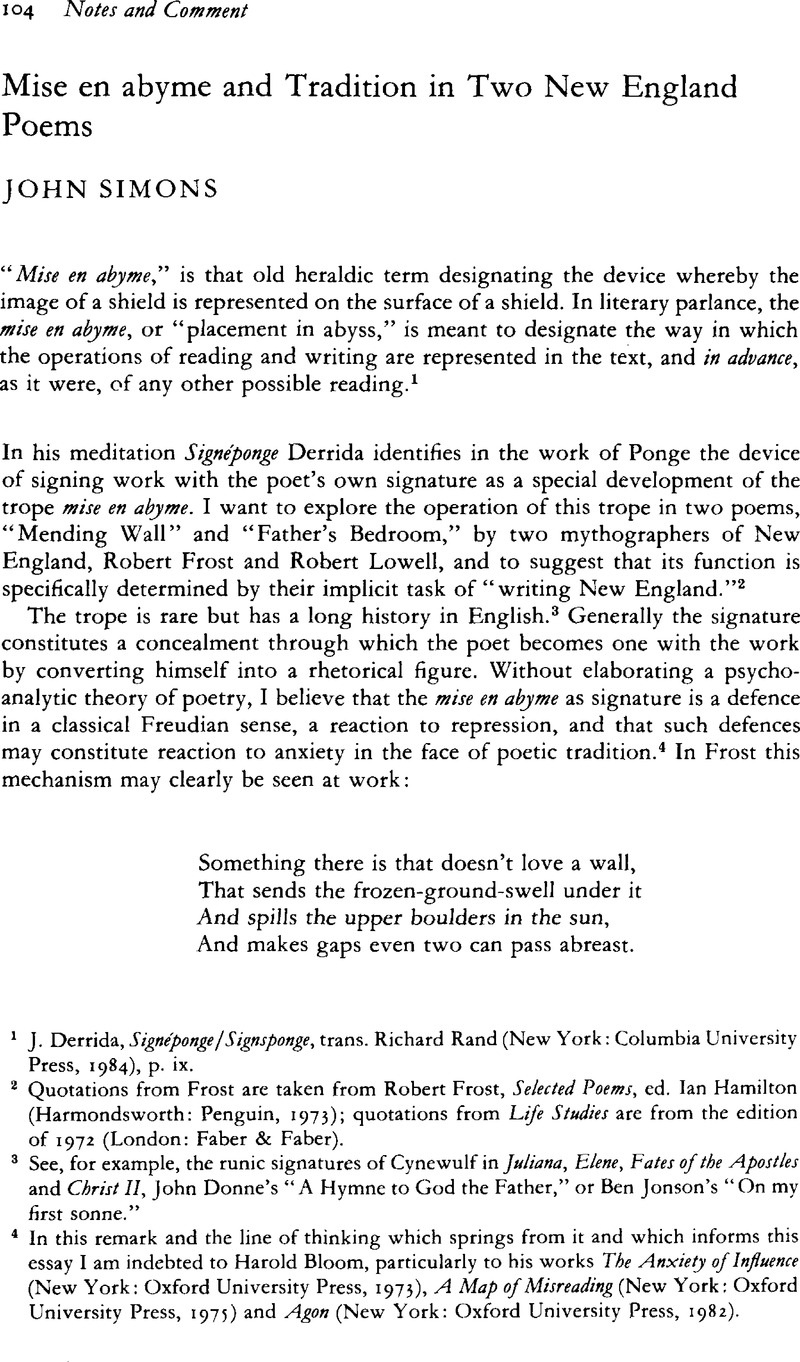No CrossRef data available.
Published online by Cambridge University Press: 16 January 2009

1 Derrida, J., Signéponge/Signsponge, trans. Richard, Rand (New York: Columbia University Press, 1984), p. ix.Google Scholar
2 Quotations from Frost are taken from Robert, Frost, Selected Poems, ed. Ian, Hamilton (Harmondsworth: Penguin, 1973)Google Scholar; quotations from Life Studies are from the edition of 1972 (London: Faber & Faber).
3 See, for example, the runic signatures of Cynewulf in Juliana, Elene, Fates of the Apostles and Christ II, John Donne's “A Hymne to God the Father,” or Ben Jonson's “On my first sonne.”
4 In this remark and the line of thinking which springs from it and which informs this essay I am indebted to Harold Bloom, particularly to his works The Anxiety of Influence (New York: Oxford University Press, 1973)Google Scholar, A Map of Misreading (New York: Oxford University Press, 1975Google Scholar) and Agon (New York: Oxford University Press, 1982).Google Scholar
5 Emerson, R. W., “History,” Selected Essays, ed. Ziff, L. (Harmondsworth: Penguin, 1982), pp. 158–59.Google Scholar
6 Quoted from “Cousin Nancy” in The Complete Poems and Plays of T. S. Eliot (London: Faber & Faber, 1969), P. 30.Google Scholar
7 It is interesting to compare the phrase “rhinoceros hide” with the description of Lowell's father's armchair which is to be found in the prose memoir “91 Revere Street” also published in Life Studies.
8 See volumes such as Notebook (London: Faber & Faber, 1970)Google Scholar, History (London: Faber & Faber, 1973Google Scholar) or For Lizzie and Harriet (London: Faber & Faber, 1973)Google Scholar for this process in full flow.
9 Another poet who has learned this technique in writing about New England is R. B. Shaw. See his “Boston Sunday dinner” in Comforting the wilderness (Manchester: Carcanet, 1978).Google Scholar